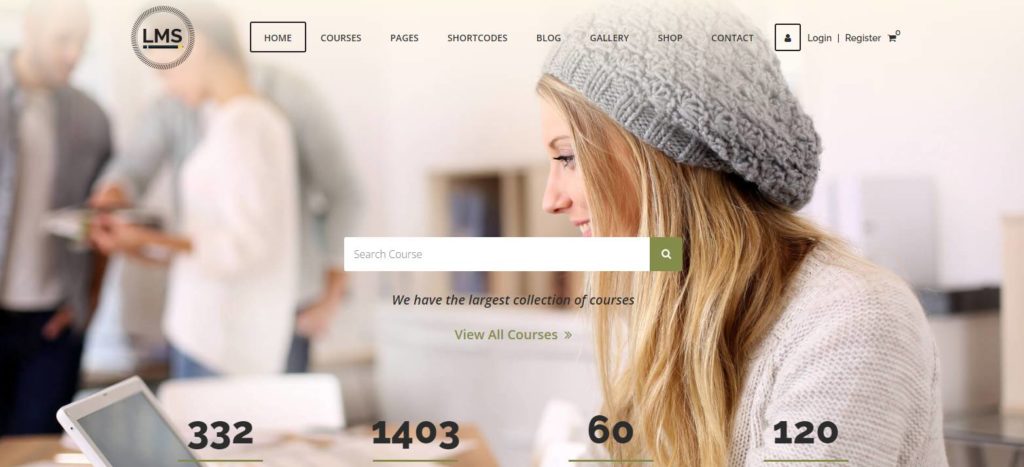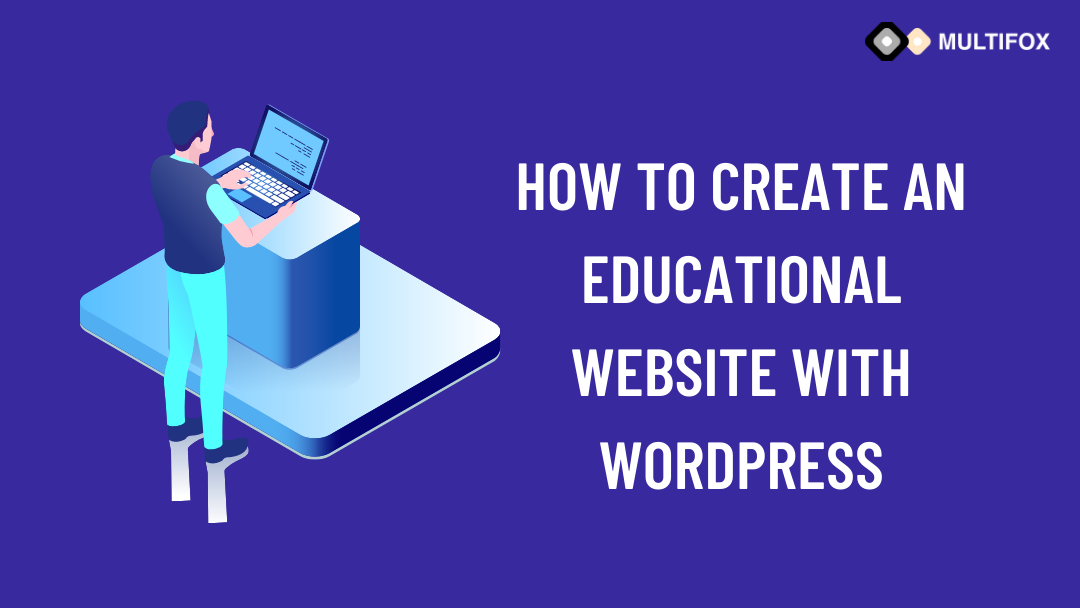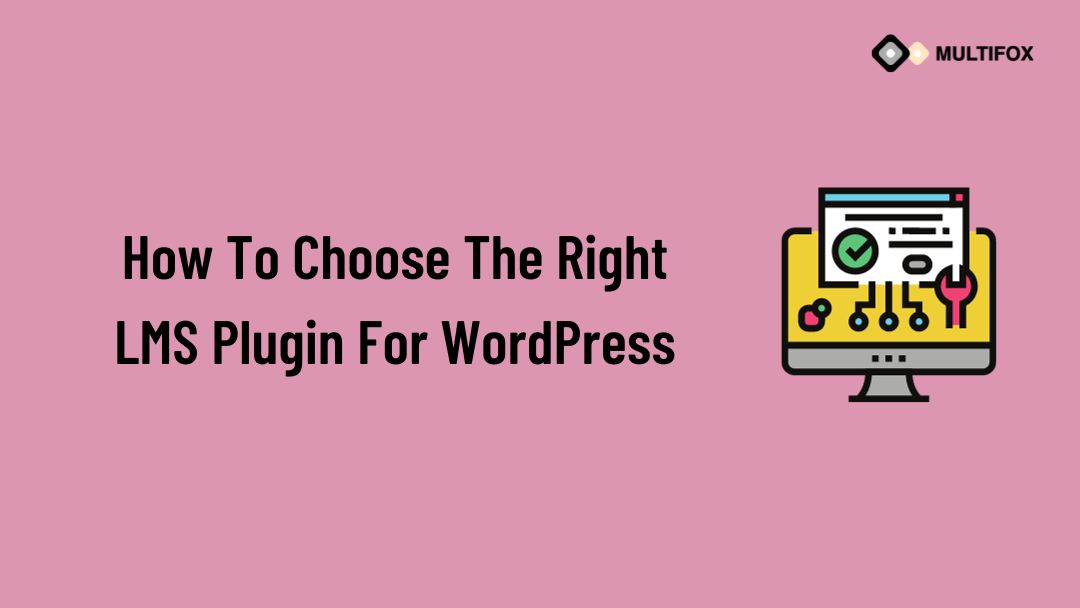If you’re planning on running or are currently running an educational website, then you should add an LMS or a learning management system plugin...
Online learning (e-learning) has revolutionized how students learn. It is essential for every teaching institution to have a website and offer its services via the internet due to circumstantial demands and to explore new ways to incorporate technology into education.
The exciting thing about e-learning is that if you are a teacher who can provide value to students, you can have your website and make money for your skill. Knowing how to create an educational website with WordPress can be rewarding for your teaching career.
Table of Contents
Why Start An Educational Website In WordPress?
We’ll list down a few things why it is a better option to create an educational website with WordPress than other website builders like Wix, Shopify, Squarespace, and others (that you probably see in Ads).
Kindly note that whenever we use WordPress, we refer to WordPress.org and not WordPress.com.
1. WordPress is Free:
Unlike other website platforms that have subscription-based payment, WordPress is completely free. Moreover, it is an open-source content management system where you can modify the site however you want. You still need a paid domain name and Web hosting to set up your site (more on this later).
2. Complete Ownership:
If you create an educational website with WordPress, you will have complete control over it. You can install any theme or plugin, run ads, include sponsor content, add an eCommerce store to your site, etc. I hope you got the point; there are no limits to your freedom.
3. Easy Customization:
WordPress is completely beginner-friendly. The page builders help you change the design, layout, sections, typography, and colors by dragging and dropping features. Various WordPress themes and plugins help you build your feature-packed education website.
4. SEO & Mobile Friendly:
WordPress is optimized for search engines and works well on different devices. The pages and posts will be automatically added to the site map of your website and be available for everyone while browsing the internet. Your educational website will adjust automatically to the user’s screen size providing a good user experience.
5. Secure & Huge WordPress Community:
WordPress takes enough measures to secure the platform by frequently updating its software to fix bugs and enhance protection. A few extra efforts towards safety from your side (to prevent spam) can make your site secure. With 41.2% of websites on the internet using WordPress as their platform, you are in safe hands, with a strong community to support the users.
How To Create Educational Website With WordPress?

1. Buy A Domain
The first thing you need for your educational website is a catchy name like udemy.com, byjus.com, etc.
Pick and name and see if it is available using the domain name search option. Suppose the name is available; hurray! You can use the name to create your website.
If the name is unavailable (there is a lot of competition out there), don’t worry. Make a few changes to the name, like adding a prefix/suffix or changing it altogether using related words, etc.
Otherwise, you can use the same name (that isn’t available); but with another domain extension like .org or .net, etc. For example. udemy.com is already taken, but udemy.io is available.
Buy the domain name from any domain registrar and head to the next step – purchasing web hosting. Here is a list of the best domain registrars listed by Forbes.
Note: Few Web hosting providers will give a domain name for free if you purchase their hosting. So you don’t need to buy it externally.
2. Purchase A Web Hosting
The second important thing for creating an educational website is web hosting. Web hosting means storing all your website information on a computer server.
When a student clicks on your website page link from his browser (such as Google), the server provides all the necessary information to be displayed on the student’s device.
The website’s performance is crucial for an educational website with many materials like courses, videos, articles, research papers, etc. You cannot have a website that takes an eternity to load. It should be fast.
Your website performance will be significantly affected by the capacity of the hosting provider. Make sure you choose the best web hosting companies.
3. Install WordPress
Most of the web hosting providers will have a one-click WordPress import option. After your purchase, log in to your account to install WordPress, which usually takes only a few minutes.
For example, if you have chosen Hostinger as your hosting provider, the following steps will help you to install WordPress.
Log in and go to Hosting Account > Search Auto Installer > Select WordPress > Click Install.
Similarly, other hosting providers will have options similar to the above steps. If you are stuck, you can reach out to their support team for help.
4. Install The Best Education WordPress Theme:
The first thing a visitor notices when he lands on your website is the look and feel. An educational website with a good user experience is a sure way to convert visitors into your students. Choosing a WordPress theme is a critical step that will greatly impact your website’s engagement rate.
A premium education theme will give many customization options and robust backend features. One of the best themes for education websites is the LMS WordPress Theme.

This learning management WordPress theme has everything an educational website needs. You can integrate Google Classroom & Zoom for online classes, show teacher portfolios, display courses cum timetables, unlimited quiz formats, videos that cannot be downloaded, other language support, easy payment options, and much more.
You can purchase and install the theme on your site from your WordPress account. Check out this detailed guide on how to install a WordPress theme.
5. Install Required WordPress Plugins:
For an educational website with added functionalities, you need plugins. Plugins are a piece of software that is added to do a specific function – for example, the contact form plugin to add a custom form on your website.
If you have a good LMS theme (like the one mentioned above), you might not need to buy other plugins since most essential features will be inbuilt with the theme itself.
If your theme lacks specific features, you can add the plugin to make it work. Here is a step-by-step guide on how to install WordPress plugins.

DT – LMS is a feature-packed WordPress plugin for creating educational websites. It is compatible with most WordPress themes, providing essential functionalities to create an educational website.
This LMS plugin has ten grid layouts, ten list layouts, four single layouts, and excellent core features. It works well with popular plugins like WooCommerce, Elementor, Visual Composer, etc.
6. Customize Your Educational Website
Now it’s time to get creative. Customize your educational website uniquely to have a lasting impression. You can build your website with drag-and-drop widgets using the Elementor website builder plugin.
You can use the free version (or upgrade to pro) and design the site as per your needs without coding knowledge. This live editor will show the changes on all screen sizes to ensure your website looks perfect on different devices.
The Required Pages to Create an Educational Website:
- Home Page: This is the main page of any website. Make sure it is beautiful and has all the necessary information & links for navigation. Add proper call-to-action buttons, display your best-selling courses or products, and show testimonials.
- About Us: Tell who you are, share your story, and introduce your team. Show the real people behind the screens to facilitate trust and confidence among your students.
- Courses: Show them what exactly they will be learning from your course, the time duration, teaching faculties, course plan, and certification details.
- Blog: Provide valuable information and give solutions to students on different topics. The quality content on your blog page will help in SEO to bring a lot of visitors to your website.
- Contact: Make it easy to contact you in case of queries. Offer visitors multiple ways to reach you. The contact form option is too old. Add social media pages, WhatsApp or Messenger, and a phone call button.
- Registration: This a valuable page where your students can register for the courses. Make sure it has a great user experience and asks only the necessary details. An autofill option would be great to save time. Also, ensure the user registration is spam-free.
- Legal pages: Prioritize the legal pages, such as Terms and Conditions, Privacy Policy, etc., to keep your visitors informed about what they can expect from you and how their data is being used.
- Join Us (optional): Invite others to join your teaching program and form a team to scale your business. You can also add new users to the WordPress site to contribute different roles.
You are now all set with your new educational WordPress website. Start selling your courses and make your dreams come true today.
Educational Websites Built With LMS WordPress Theme:
These educational websites are built with the LMS WordPress theme to give you a real-time example.
- https://duxpd.co.za/ – A non-profit company that offers creative, effective, and practical youth development training/coaching programs to high school and tertiary education students.
- https://www.mrayya.com/ – This is a startup company by Mohammed Aburayya that aims to increase financial awareness and culture for Arab citizens and families.
- https://nagarjunavalencia.com/ – An international organization that benefits beings through the Buddha’s teachings.
- https://sailplus.academy/ – Sail+ Academy is the first e-learning platform for sailing.
- https://aleanzaph.com/ – A website that teaches culinary, baking, pastry, lifestyle, and business management courses.
Wrap Up:
We hope you now know how to create an educational website with WordPress. For any help with website customizations, reach out to us. Leave a comment if you find the article helpful.
Also, learn how to best horizontal scrolling Website themes and how to create tables in WordPress posts. Are you confused about finding what WordPress theme a website is using, here is our free WordPress theme detector tool.
For more tutorials, visit our blog. If you have questions, leave a comment in the comments section, and our WordPress experts will reply.


